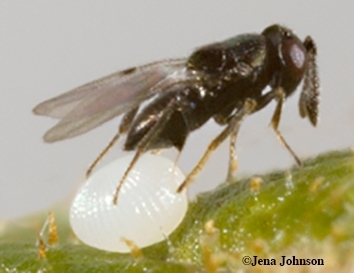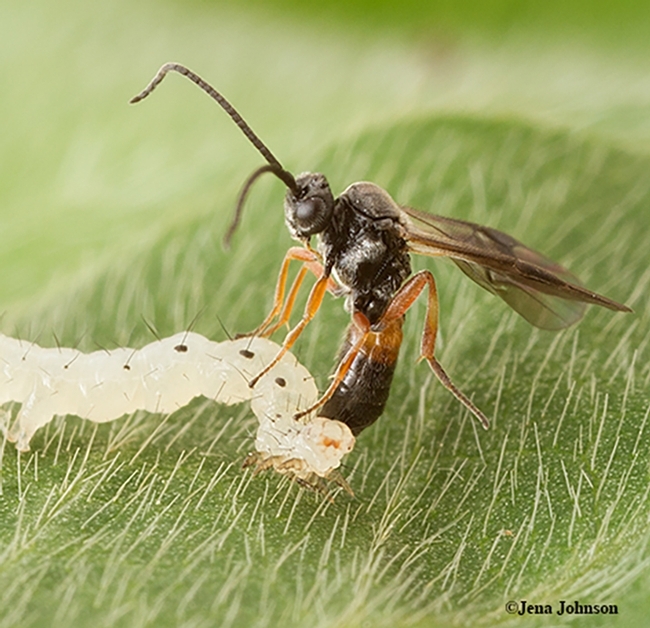
But newly published research by UC Davis agricultural entomologist Christian Nansen and insect physiologist Michael Strand of the University of Georgia reveals a new, non-destructive and quite accurate method to characterize physiological responses to parasitism: proximal remote sensing or body reflectance response data.
They published their research, “Proximal Remote Sensing to Non-Destructive Detect and Diagnose Physiological Response by Host Insect Larvae to Parasitism,” Dec. 4 in the journal Frontiers in Physiology.
Nansen, first author of the paper and an associate professor in the UC Davis Department of Entomology and Nematology, specializes in insect ecology, integrated pest management and remote sensing. Strand, a professor of entomology at the University of Georgia, is an international authority on the physiology of insect parasitism.
The scientists studied two common parasitic wasps or parasitoids, Microplitis demolitor, and Copidosoma floridanum, which lay their eggs in the larval stages of the soybean looper moth, Chrysodeixis includens. The pest, found throughout much of North and South America and elsewhere, feeds on soybeans.

“Based on reflectance data acquired three to five days post-parasitism, all three treatments (control larvae, and those parasitized by either M. demolitor or C. floridanum) could be classified with more than 85 percent accuracy,” they wrote.
Due to parasitism-induced inhibition of growth, “it's easy to differentiate soybean loopers parasitized by M. demolitor from non-parasitized larvae as long as the developmental stage of the host larva is known,” they said. In addition, a single M. demolitoroffspring emerges from the host larva 7-9 days post-parasitism to pupate, while non-parasitized larvae continue to increase in size to the final instar.
Copidosoma floridanum minimally alters host growth until late in the final instar, when thousands of wasp progeny complete their development. This wasp is known for having the largest recorded brood—3,055 individuals--of any parasitoidal insect.
The researchers said that the accuracy rate of more than 85 percent holds promise. “The hyperspectral proximal imaging technologies represent an important frontier in insect physiology, as these technologies can be used non-invasively to characterize physiological response across a range of time scale factors, such as minutes of exposure or acclimation to abiotic factors, circadian rhythms, and seasonal effects. Although this study is based on data from a host-parasitoid system, results may be of broad relevance to insect physiologists.”

Both of the wasps they studied are idiobionts and endoparasitoids.
Nansen noted that “many species of minute wasps are parasitoids of eggs and larvae of other insects, and parasitism represents one of the most extreme life strategies among animals”
“Living inside the body of another animal,” he said, “poses a series of non-trivial challenges, including how to overcome/suppress the defense response by the host; how to obtain oxygen; how to feed on the host without killing it--because once the host is dead, then microbial organisms and general decomposition will make the host body unsuitable--and how to manage waste.”
Nansen likened the developing parasitoids to astronauts flying in a space capsule. “A developing parasitoid faces a long list of serious practical challenges, so the evolutionary selection pressure has been immense and lead to some of the most extreme cases of co-evolution.”
And those soybean loopers? Those major pests of soybeans? Thanks to this research, we now know more about physiological responses to parasitism--and there's more to come. (We're also admiring the amazing photography of Jena Johnson!)
As the researchers said: "The hyperspectral proximal imaging technologies represent an important frontier in insect physiology."
Attached Images:
